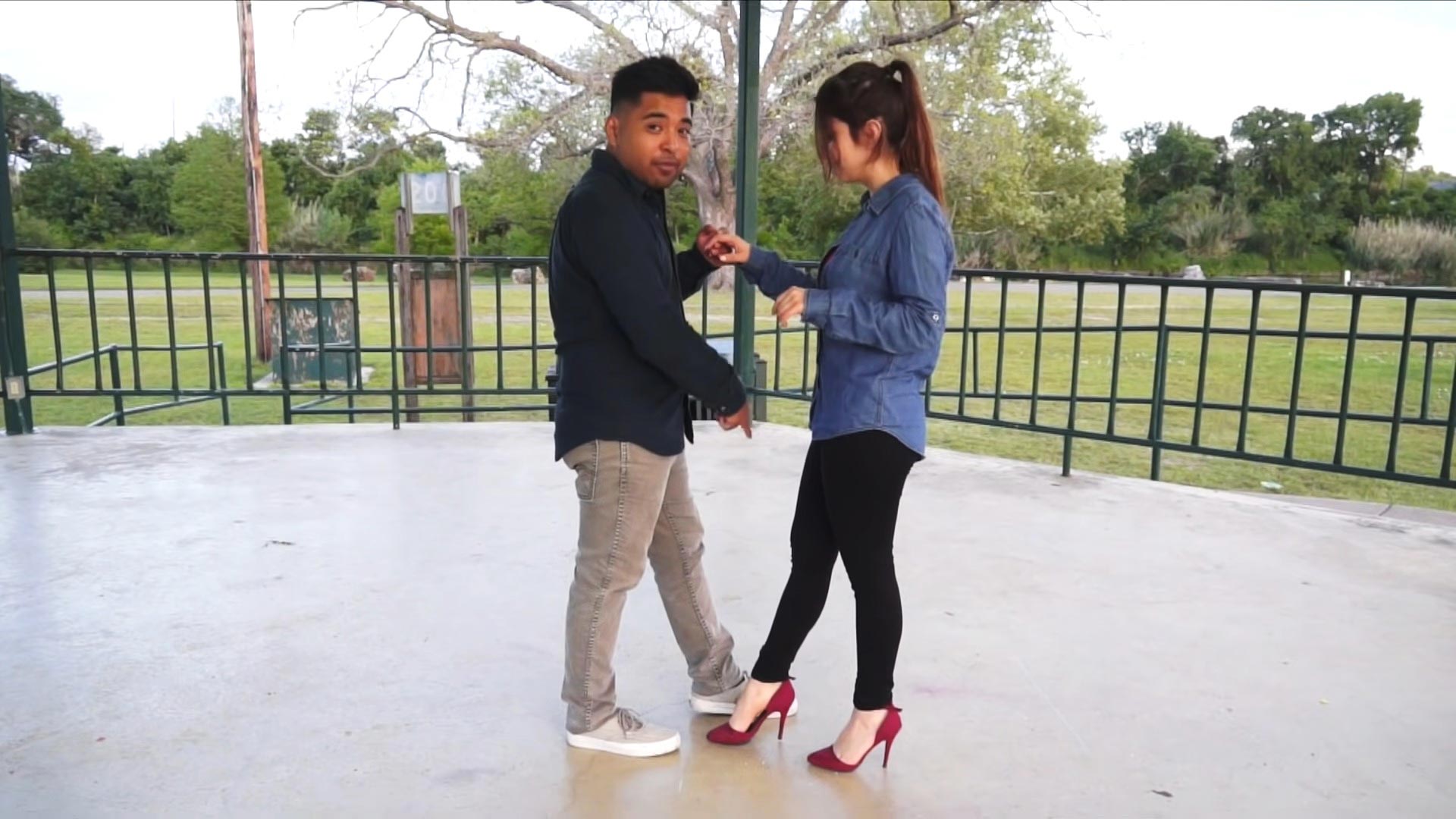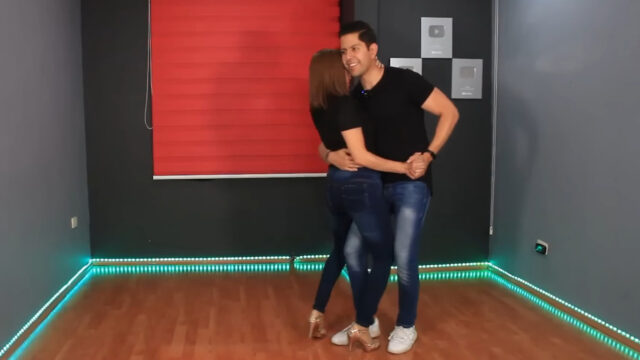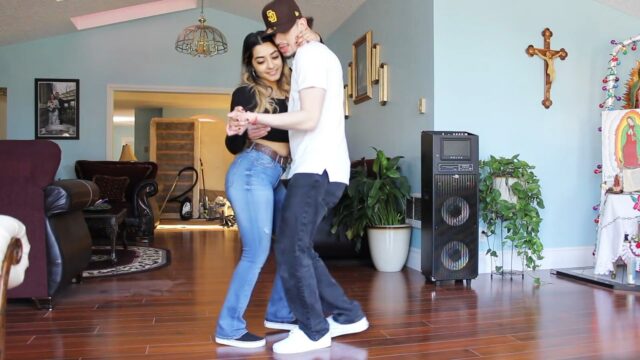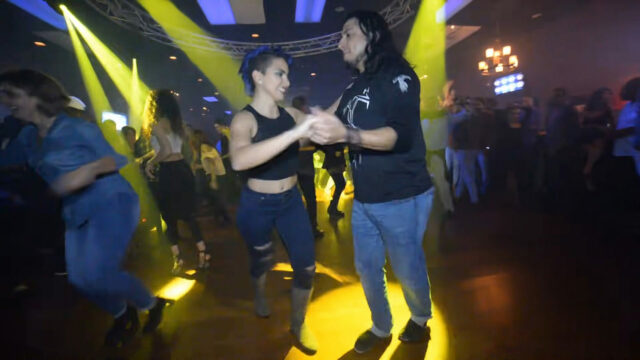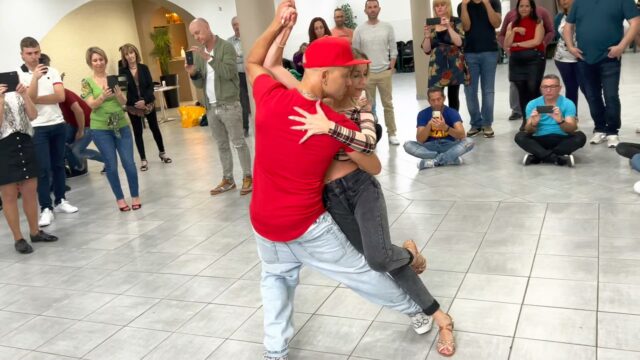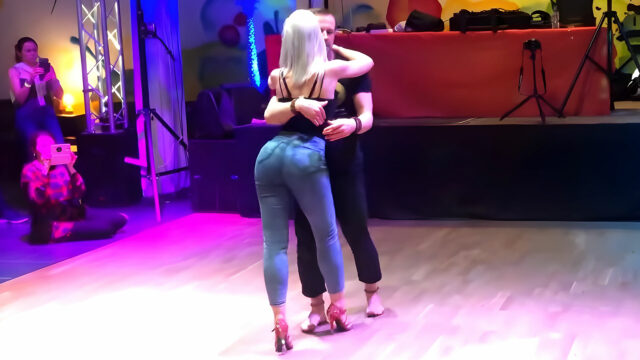Cumbia is more than just infectious dance music. Over centuries, this folk genre has become Latin America’s unifying heartbeat, connecting diverse cultures across borders With its infectious rhythms, fun footwork, and flirtatious energy, learning how to dance Cumbia is a joy. This video from JP and Karina will guide you through some basic steps that even beginners can master in no time:
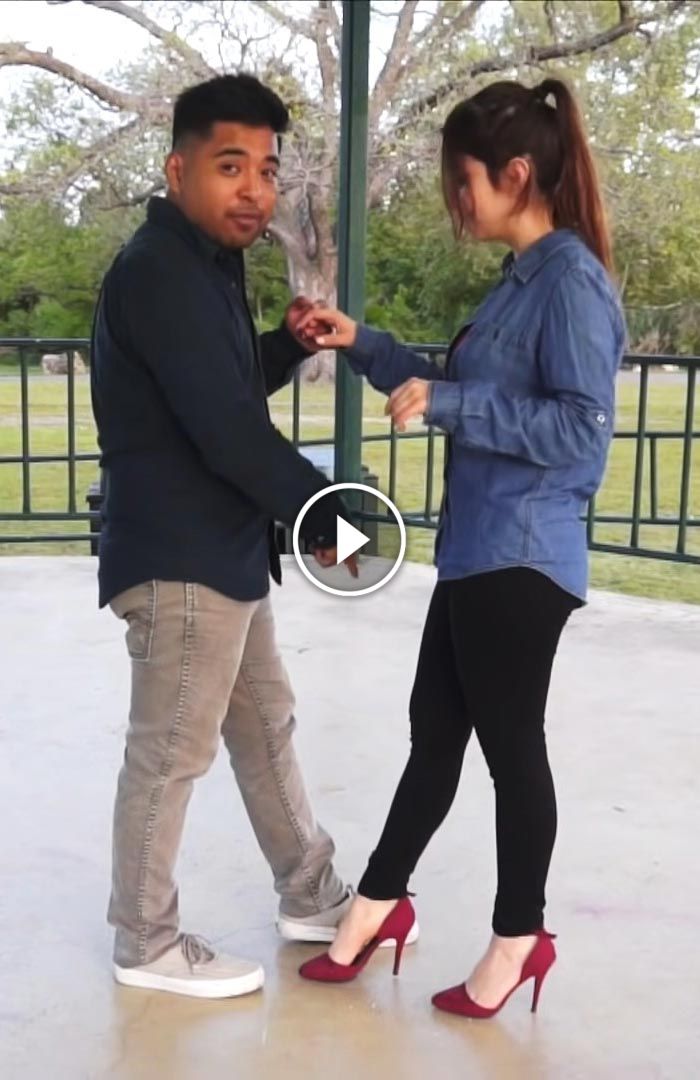
JP emphasizes keeping these beginner steps simple by focusing on the footwork and timing, rather than styling with spins or body movements. Learning the basics first builds confidence to then add your own flair. Now let’s talk more about why is Cumbia so special and where did it come from…
- How to Dance Norteñas? Basic Step & Partnerwork
- How to Dance Huapangos: Learn the Basics with Korayma and Antonio
- What is Cumbia? Unpacking the Famous Dance
Originating along Colombia’s coast, cumbia was birthed by African slaves who blended traditional rhythms with indigenous sounds. The word “cumbia” derives from the African term “cumbe” meaning dance. Its distinguishing double-time rhythm features percussion instruments like drums, shakers, and scrapers.
Initially an underground form of expression for marginalized communities, cumbia was looked down upon by elites. But its irresistible melodies and rhythms steadily permeated all levels of society. By the mid-20th century, it had spread throughout Latin America, taking on regional adaptations.
Today, modern interpretations fuse cumbia with electronic and pop influences. This versatility keeps it relevant across generations. Yet no matter how much cumbia transforms, it retains that signature festive spirit and driving beat – whether in traditional folk or modern electronic styles.
More than just music for dancing, cumbia facilitates cultural connection. After emerging in Colombia, cumbia spread to Panama, Mexico, Peru, Chile, Argentina, and more. These countries have put their own spin on its music by fusing it with local instruments, rhythms, and dance styles. For example, Mexican cumbia tends to have a faster, more upbeat tempo compared to the relaxed swing feel of Argentine cumbia. Peruvian cumbia or “chicha” incorporates electric guitars and Amazonian or Andean folk sounds.
This prolific musical backbone of Latin America manages to unify a diversity of cultures across the region and through the generations with its celebratory spirit. Cumbia is still super popular to this day, remaining open and adaptable over centuries, cumbia retains its relevance as a cultural life force.
If you enjoyed this article, feel free share it with your friends and let them know what you think about it. Also, consider checking out our most recent posts and stay in touch. Thank you!
